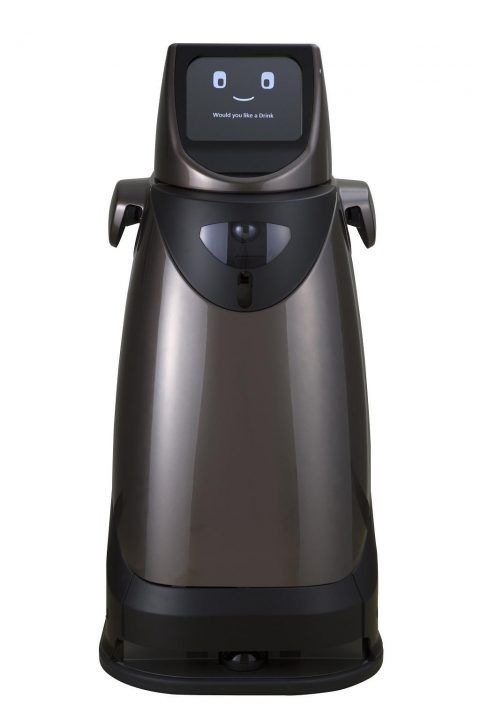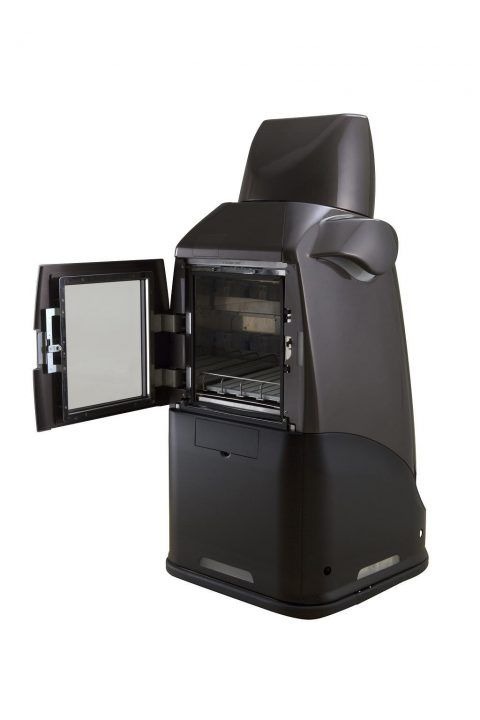Panasonic's HOSPI Robot Gets New Jobs At Hotel And Airport
Panasonic is getting in on the current robot craze, revealing new real-world trials for its HOSPI Autonomous Delivery Robot that will kick off this month. Set to be loosed upon the corridors of the ANA Crowne Plaza Narita hotel, as well as Narita International Airport, the robot – which resembles an armless Dalek of sorts, albeit one with a friendly face rather than an appetite for murdering Time Lords – has already been adopted by a number of Japanese hospitals. Now, Panasonic is curious to see how it does outside of medical settings.
Currently, four hospitals in Japan have HOSPI robots roaming their halls, and others abroad according to Panasonic. Among its advantages, the company points out, are its abilities to remain aware of surroundings without expensive infrastructure modifications. While some existing robot systems demand special magnetic strips be embedded in the floors or walls, or beacons be added throughout the building, HOSPI uses its own internal map.
That data is combined with real-time feedback from sensors around the robot. As a result, even if the collision-avoidance system kicks in because of an obstacle or person in the way, HOSPI can bring itself back on-track. Meanwhile, changes in facility layout or temporary modifications can be quickly tweaked on the mapping database, with the robot automatically adjusting its routes accordingly.

For Narita airport, HOSPI will be dispatched as a high-tech aid to bussing tables. Staff will be able to load up the storage compartment with a hatch at the back of the robot, clearing used dishware in the airport lounge. HOSPI will then trundle off to take it to be washed.
As for the ANA Crowne Plaza, the robot will be used in the first floor lobby. There, it will offer drink service to guests, with a selection of bottled beverages on offer as people wait. It'll also be able to give bus information through its display-based face.

Both trials are relatively short-term, with the hotel getting HOSPI first, between January 13th and 18th, and then the airport trying it out between January 23rd and 27th. Panasonic says that it has no plans for more permanent roles at either location, though what it learns in each will help shape its future personal care robot line-up.
It's been something of a busy month for assistance robots. Back at CES 2017, LG revealed plans to dispatch a robo-assistant of its own to Narita airport, with the LG Airport Guide Robot doing much as its name suggests. Fronted by a large curved display, and with a second display for its face, it'll be able to show people maps of the facility and its gates, guide them or even accompany them to their flight, and scan boarding passes for more information.
Meanwhile, Starship Technologies began public trials of its delivery robots last year, with the boxes-on-wheels taking packages, groceries, and prepared meals around numerous different cities around the world.
